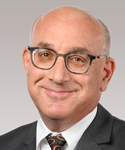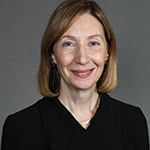 ACR CONVERGENCE 2020—Eric Rubin, MD, PhD, took over as editor in chief of the New England Journal of Medicine in September 2019, just a few months before COVID-19 began taking over the world.
ACR CONVERGENCE 2020—Eric Rubin, MD, PhD, took over as editor in chief of the New England Journal of Medicine in September 2019, just a few months before COVID-19 began taking over the world.
Since then, Dr. Rubin’s perspective on the pandemic has been unlike that of any other person: He has led reviews of a deluge of new research on the disease at the nation’s most distinguished medical journal, privy to new data on potential therapies to improve outcomes across the globe. And he has done so with a particular level of expertise: His specialty is infectious disease.
Dr. Rubin shared his thoughts on the pandemic in a keynote address at the opening session of ACR Convergence, a COVID-19-focused session that also included a presidential address from ACR President Ellen Gravallese, MD, on lessons learned from the pandemic.
Convergence of Infectious Disease & Rheumatology
One of his main messages, Dr. Rubin said, was the connection of infectious disease and rheumatology.
“There are real alliances between the two fields,” he said. As a young boy, he had chickenpox and recovered, but a few weeks later developed encephalitis, which, for a time, left him comatose and later unable recognize his parents.
“I clearly had an infection, but I also had an inflammatory disease that was connected to the infection—but was independent,” he said. “Inflammation is an integral part of what can cause damage during infection.” This has been underscored by the COVID-19 epidemic, he said, in which the subsequent inflammatory response has proved devastating for many patients.
Dr. Rubin’s address was given days before the first results for efficacy and safety were announced for two COVID-19 vaccines, which the manufacturers have said are about 95% effective.
But attention to safety should remain a top priority, his comments suggest.
“I can’t overemphasize how much safety plays a role in the decision of whether or not to go forward with a vaccine,” he said. “Yes, COVID-19’s a bad disease, but this vaccine is likely going to be given to an enormous number of people—maybe billions of people.”
Rare complications from the rotavirus vaccine, for example, weren’t seen until the vaccine was given to hundreds of thousands of people. “The longer we wait, the more likely we are to catch late events,” Dr. Rubin said.
As for treatment, public health measures aimed at prevention—mask wearing, social distancing and testing followed by contact tracing—have been shown to work. Treatments have had some success—remdesivir to prevent viral replication has had “a rather minor effect,” and dexamethasone’s effects to control inflammation in critically ill patients have been small but dramatic, helping reduce the number of deaths, he said.
Overall, the available treatments are “not that great,” Dr. Rubin said.
“I don’t know that we can do better over a very short term, but there are still trials ongoing, and I am mildly optimistic about those,” he said. “Finally, we know how to prevent infection. We certainly know the public health measures that work. It would be great if they could be more robustly implemented.”
Presidential Address
ACR President Ellen Gravallese, MD, chief of the Division of Rheumatology, Inflammation and Immunity at Brigham and Women’s Hospital, Harvard Medical School, Boston, said rheumatologists have “risen to many challenges with hope” since COVID-19 struck—from starting registries to collect data on patients with rheumatic diseases who contracted COVID-19, to creating a virtual lecture series for fellows, to developing patient-facing safety documents and written guidance for physicians.
“What I have witnessed in the field of rheumatology in response to this pandemic has been nothing short of remarkable,” Dr. Gravallese said.
She said the pandemic has left rheumatologists and the ACR with several lessons:
1. As the content experts in immunology, our knowledge and insights are highly relevant. Rheumatologists should be “in the room where it happens” when it comes to directing care of patients with diseases that impact the immune system, designing clinical trials, and designing and using vaccines, she said.
2. To respond rapidly and effectively in a crisis, we need to rethink our organizational structure. As the pandemic hit, the ACR started getting calls from members asking how to treat patients—in particular, how to manage patients taking immunosuppressive drugs.
“We quickly realized we needed a more nimble organizational structure to address the concerns of members,” Dr. Gravallese said. This need gave rise to three task forces on clinical guidance for a variety of patient groups and topics, which had to process new data in real time as the pandemic kept unfolding. A task force was also convened to address issues for members in practice and for advocacy at the federal level.
3. We can’t do it alone. The task forces included experts in infectious disease, cardiology, pediatrics and epidemiology. Dr. Gravallese said, “collaboration with experts in other fields of medicine is critical.”
4. Telehealth is changing the way we practice medicine, but is it a virtually perfect solution? Rheumatologists were among the early adopters of telehealth once the pandemic hit, and Dr. Gravallese highlighted the “great promise for this modality in the future beyond this pandemic, assuming reimbursement for it can be maintained.” Telehealth could help expand the reach of rheumatology into underserved communities and help alleviate the rheumatology workforce shortage, she said.
But the physical exam should continue to be a cornerstone of care, Dr. Gravallese said. “We should continue to hold the physical exam in high esteem and insist on seeing our patients in person between telehealth visits to identify and confirm suspected physical findings.”
5. Educational meetings will never be the same. Virtual meetings have shown that digital platforms can be used for medical education, but concern looms that in-person meetings will become a thing of the past.
That doesn’t have to happen, according to Dr. Gravallese. “We should work to look forward to hybrid meetings, embracing remote learning, in part, while maintaining in-person exchanges of knowledge and ideas,” she said.
6. We are a global society facing common issues relevant to rheumatology. “As the pandemic has taught us how easily a virus can move across the globe, it has also taught us how easy it is to communicate with one another globally,” Dr. Gravallese said. “We can utilize these almost instantaneous connections to our advantage to solve problems collaboratively across borders.”
Thomas Collins is a freelance medical writer based in Florida.





